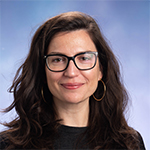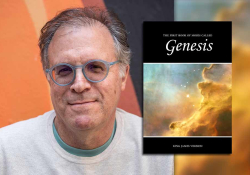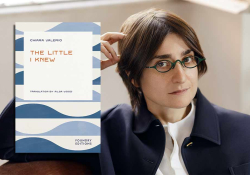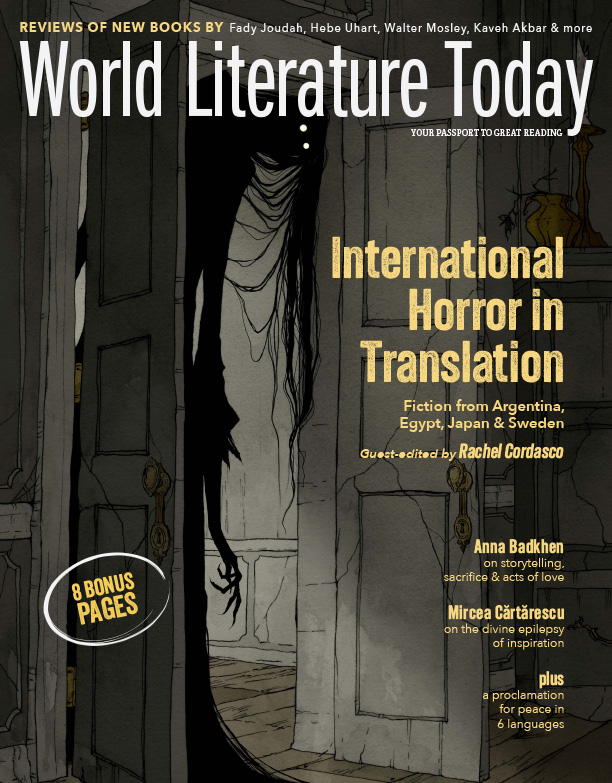Public Art and the Artist: A Conversation with Fitore Berisha Alísdоttir
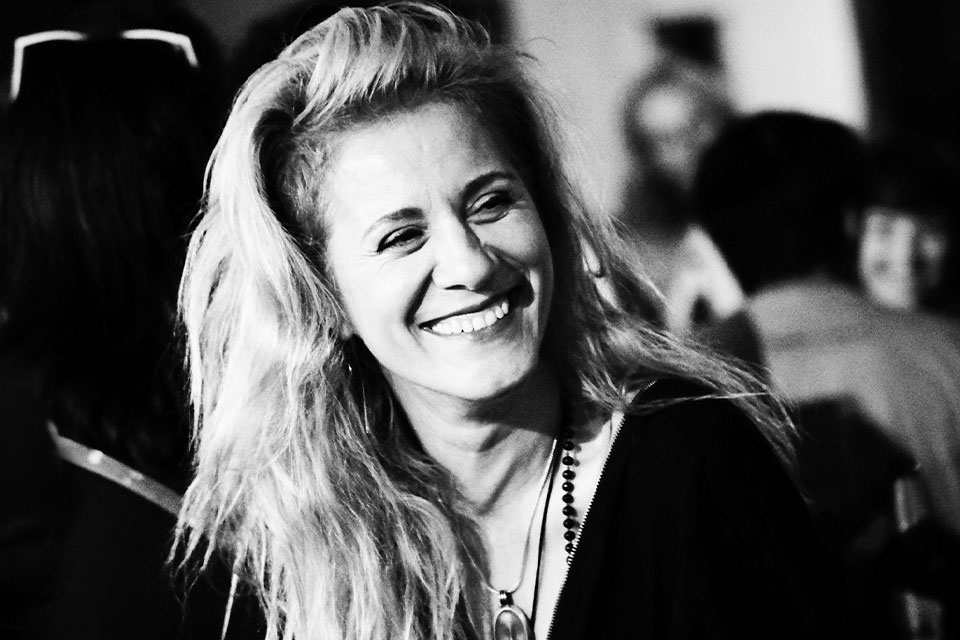 Artist Fitore Berisha Alísdóttir is an Albanian woman from Kosova who now divides her time between Kosova and Iceland. Her work exposes and condemns human-rights violations. Here, Eralda L. Lameborshi explores Alísdóttir’s work as a muralist, the connections between politics and art, and more.
Artist Fitore Berisha Alísdóttir is an Albanian woman from Kosova who now divides her time between Kosova and Iceland. Her work exposes and condemns human-rights violations. Here, Eralda L. Lameborshi explores Alísdóttir’s work as a muralist, the connections between politics and art, and more.
Eralda L. Lameborshi: Fitore, I admire your work, its scope, its courage, and the ways it addresses crucial social issues. I am curious about artistic beginnings, and I think of inspiration as a seed that was planted early on in life. I wanted to know about that seed, how you’ve nurtured it and how it’s grown?
Fitore Berisha Alísdóttir: I am honored to speak about my artistic journey, the collective experience of the society that molded me, and the efforts to create a new society through art in Kosova.
I was raised in a family of artists. My uncle was a professional artist who lived in Paris for many years. Visiting him as a child opened my world and gave me a different perspective on culture and traditions. My grandmother, by social standards, was a simple housewife, but when I think about her work, I see it as artistic in ways that were unaccounted for at the time. She sowed traditional folk costumes from the Dukagjin region of Kosova, and the patterns on clothing were her own design. Essentially, her work was creative, original, and she wasn’t merely making copies. My father’s siblings were architects, and he himself was great at portraiture, so art was in the family.
I began to draw as a young child. During my teen years, Kosova experienced a great deal of political upheaval, so while everyone followed the news on television, I was soothing myself through art. It was an escape from the overwhelming reality.
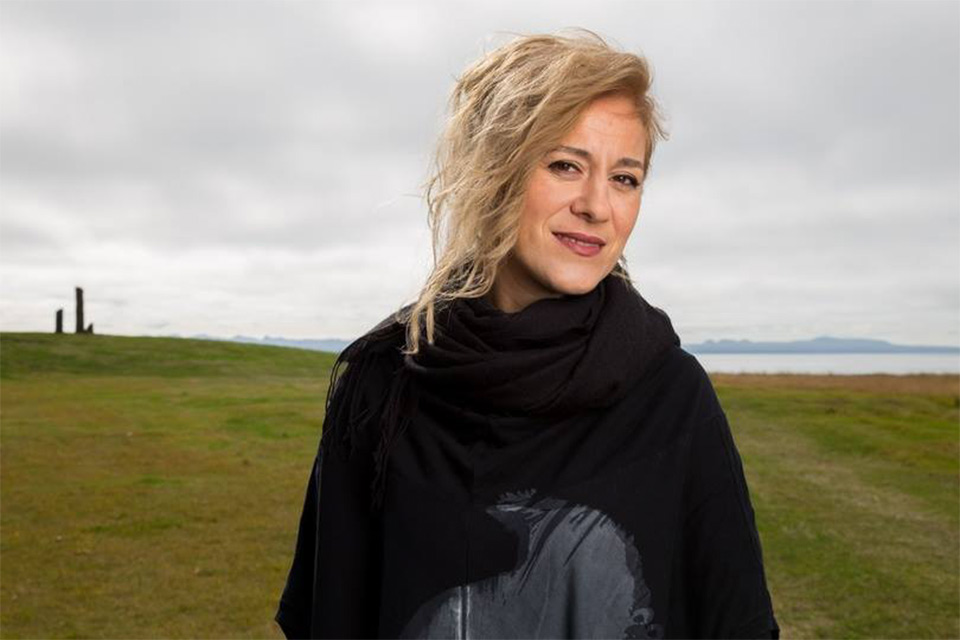
During my teen years, Kosova experienced a great deal of political upheaval, so while everyone followed the news on television, I was soothing myself through art.
Lameborshi: I first became aware of your work through your mural Andrrat e Thyera [Broken dreams] in Pristina in 2022, and while you also draw, paint, and are even engaged in performance art, I am interested to hear what the mural offers your artistic vision that other forms of visual art don’t?
Alísdóttir: My interest in murals started while I was attending a fellowship program on leadership in Washington, DC, in 2001. It became evident during the program, however, that my path did not lead toward a political career. While in the United States, I visited Philadelphia to see the many murals of the city, and in this form of visual art I found something quite profound: the large scale of the murals, the scope of their message, and expression through public art opened new horizons for my artistic development and introduced new opportunities for active social engagement through art. I was in awe at the thought that “people did this,” and the next thought was, I have to do this.
When I returned to Kosova, I asked myself: What do I want to represent? What is my passion, and what do I want to express in a postwar country where the architecture is quite ruined, gray, and reminiscent of the communist era? The first project was completed in 2002 and was titled Youth Symbol. I wanted to represent the diversity of the campus at the University of Pristina, which housed students from all over the world. In addition, I wanted to prove to myself that I could do something large-scale, one hundred square meters. Not many people believed in me, and I didn’t really have the kind of support I needed, especially working as a mother of two small children. It took a long time to finish it, but I was so proud.
Lameborshi: I want to hear more about your reluctance to engage in politics, because when I look at your art, it is inherently political. Could you speak about the relationship of your art to politics and social issues?
Alísdóttir: Well, everything is politics. My work exposes and condemns violations of human rights. I advocate for gender equality. My father was a judge, and he raised us with strong convictions about justice, equal rights, women’s rights, and I feel quite strongly when I witness social injustice. The only tool I have is my art. The mural is especially well suited for the ideas I want to express, because it is in a public space, which allows for direct interaction with social groups.
Recently, I was in Brussels to complete a mural dedicated to the fight against femicide titled Haunted, and I was impressed by the warm reception there. People I met shared how much they supported a foreign artist creating a mural on a street inhabited by many immigrants in Brussels. In 2020, when I started Andrrat e Thyera in Pristina, I was very angry, because there were a lot of cases of domestic abuse during the pandemic lockdown, and we were isolated, which made it difficult to fully condemn the violence women were experiencing.
For example, during that year a woman named Fitore, a young woman of thirty years and mother of small children, died because of domestic abuse. I imagined that I was her mother because my boys were her age. We try to raise our children with everything we have, and it’s not easy, especially as a single mother, and then they get killed by their partners. Consequently, children raised in these homes are traumatized, and this creates a cycle of brokenness in our society. I promised myself that for all these Fitores who are no longer with us, I will raise my voice in memoriam.
My life’s work is affected by the realities I inhabit, and I am in a position where I can speak against domestic violence and femicide. This was the intention behind Andrrat e Thyera.
Lameborshi: There is a recurring visual theme throughout your body of work. The central subject, most often women, insists on being looked at and looking back, which for me translates to a form of agency. The woman of your art is not passive, and there is a transfixing quality to the eyes that hold the viewer captive. What role does vision, gazing, seeing, have in your overall body of work?
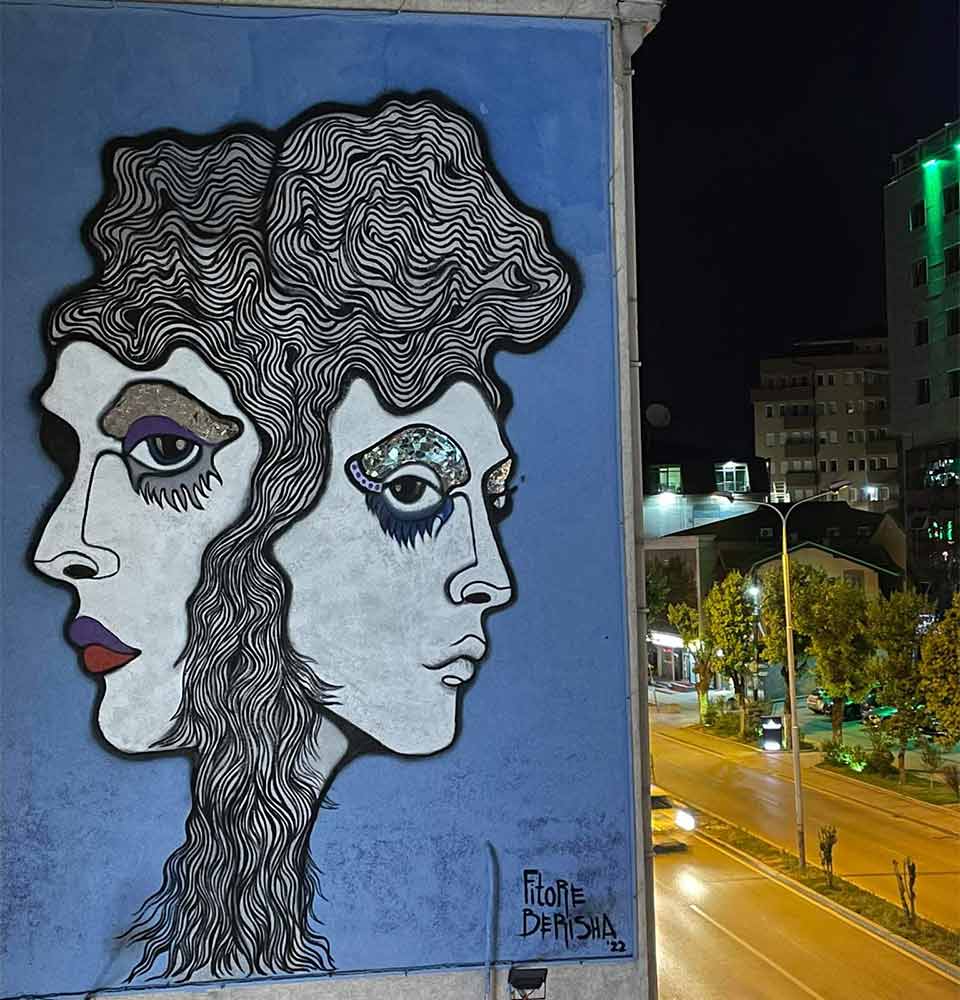
Eyes hold the story of a person.
Alísdóttir: From a very early age I wanted to be seen, and the older I get I realize that everything starts there, in childhood. I also see eyes as representing the soul of a human, and every time I return to Kosova—because I live between Iceland and Kosova—I ride public transportation buses with no other purpose but to observe people, their expressions, their moods, and I become aware how vulnerable people are. I am troubled by the brokenness of society, but I also find profound compassion in the knowledge that everybody is doing the best they can. Eyes hold the story of a person. When I composed Andrrat e Thyera, I painted the broken mirrors on the women’s eyelids so that when the person guilty of domestic violence looks onto the mural, the broken mirrors will gaze back at them.
Lameborshi: The desire to be seen is quite important, because as women, many of us have struggled with being seen against our will, and I realize that this isn’t what you mean, which is why I want to press upon this idea of wanting to be seen: being seen how, exactly?
Alísdóttir: As a young woman, I struggled living in a patriarchal society. I had to be nice and kind, but if I wanted to express myself, it had to be something that made an impression. I was going to study law because my parents didn’t think that I had earned the artistic path. I started attending the academy of arts without them knowing. When I showed my parents my work, they were amazed because my internal world, the subjects and themes of my drawings, and what I presented externally didn’t match. I always had to prove to them my worth as an artist. It was not enough just to do the sketches, but the art had to have weight. Art became a place where I could express my interior world for which there was no space in society.
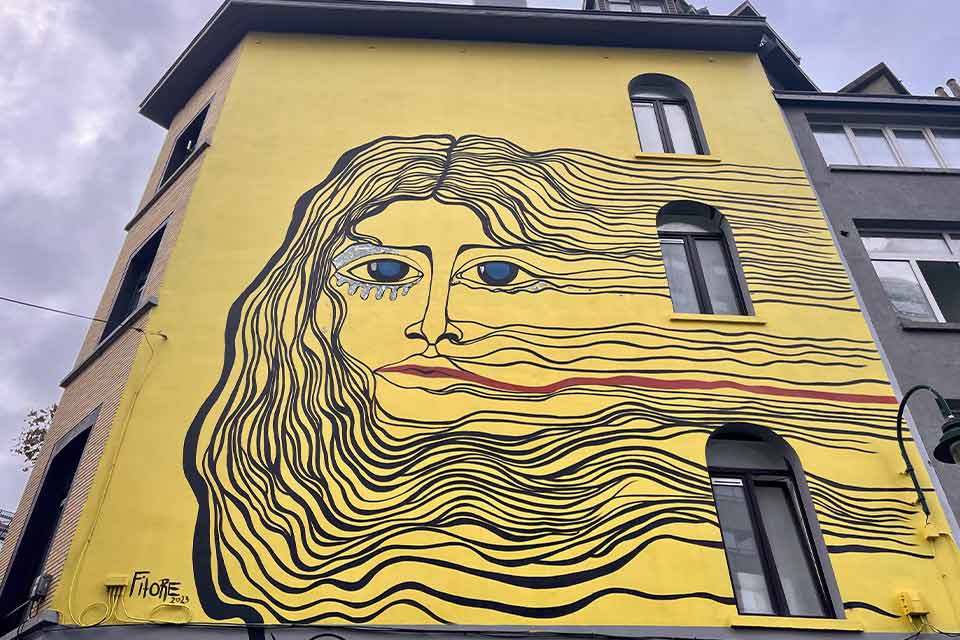
Art became a place where I could express my interior world for which there was no space in society.
Lameborshi: Andrrat e Thyera and its theme are part of a broader movement for women’s rights in Kosova. Upon seeing that work, I was struck by the way the placement of the figures echoes the Albanian flag’s double-headed eagle. Why the choice of the women facing away from each other? Was this echo of the Albanian flag intentional?
Alísdóttir: I was thinking last night about the way other people see your artwork, even if you haven’t consciously created it that way. I wasn’t conscious of this connection, but it’s beautiful how you see my artwork. When I first started working on the mural, I envisioned two women where one is younger and the other older. In the composition, the older woman is somewhat in front and the younger a little behind. Domestic abuse doesn’t only affect young women. It touches every age. Recently, I’ve also been thinking about children as victims of domestic abuse, but that’s another theme for later. We have a lot of work to do in Kosova.
Lameborshi: Another mural that is deeply evocative is the one featured in Brussels’s Seventeenth Balkan Trafik Festival titled Haunted, completed in 2023, and which you briefly mentioned earlier. [Haunted is located on Rue des Fleuristes 59, 1000, in Brussels, Belgium.] The mural features the ever-present gaze from the subject, but it also features lines formed by the hair of the female subject, resembling roads, paths, movement. What was the intention behind this piece?
Alísdóttir: The mural was inspired by the Iranian protests of this past year. It was heartbreaking to see what was unfolding, and it was like an ancient wound was opening again and again. So many women have been killed in this revolution, and the hair in the mural is dedicated to them. The yellow of the hair and the blue of the eyes is dedicated to Ukrainian women. It is a mural in solidarity with global women’s rights. I wanted to speak about how women are often the victims of war and violence. For how long this will keep being the case, I don’t know. I am angry and deeply saddened.
Lameborshi: As a person who lives between Iceland and Kosova, do immigration, displacement, and identity play a role in your choices of subjects and their representation?
Alísdóttir: It has a huge role. I’m an Albanian woman from Kosova, and that’s my identity. Iceland gave me the power and confidence to be stronger, and my accidental journey to immigrate to Iceland was . . . I was saved. It saved my life, honestly. I got to become who I am and to heal myself. Having spent fifteen years in Iceland, I struggle when I return to Kosova because I wish to see social changes happening faster: freedom, equality, justice for everyone. Major strides have been made; women now have a place in Parliament, freedom of speech is a reality, etc., but underneath, the more time I spend in Kosova the more my frustration grows. This is a painful truth. Internalized misogyny traverses women’s life in my country and is extremely difficult to uproot.
At the same time, I am also deeply encouraged by the work formidable women are doing in Kosova. For example, Luljeta Demolli leads the Center for Gender Equality with an amazing team of women. There are wonderful journalists who run Kosova 2.0 with Dafina Halili at the helm. These women are fearless, inspiring, and a source of profound hope for younger generations. My 2017 exhibit in Pristina titled You May Grow Your Horns envisioned such women who weren’t only defined by their traditional gender roles, but they were “creatures” growing their horns, having agency, having a say in the journeys of their lives. [The exhibit was held at the Hani of Two Roberts Gallery in Pristina, 2017.]
Lameborshi: Kosova is one of the youngest countries in eastern Europe that still faces many challenges. Does your national identity play a role in your art? Do you ever feel pressure as a member of the Albanian Kosovar diaspora to represent your country?
Alísdóttir: All the time.
Lameborshi: Is that hard for you? Does it place certain demands on your art?
Alísdóttir: Yes. First, my friends from abroad see the potential and are interested in the stories that my work animates, but they don’t realize that Kosovars don’t have freedom of movement. Young people cannot travel because of limited visa access, so it’s very hard, but if we shift our perspective, there are a lot of good things happening: art, filmmaking, music productions, book publications, and Kosovar theater—all these areas are thriving.
Still, I have to defend Kosova when I’m abroad. People are not very informed, and I try to give information to generate curiosity and understanding. Recently, I was traveling for four months in Asia, with my last stop in India where I attended the Kochi-Muziris Biennale in Kerala and met artists from all over the world. I had the opportunity to talk about Kosova with people who are interested in global affairs. It’s beautiful to share our belonging, where we are from, what we are doing, how open we are. Despite misconceptions about my country, I’m happy to interact with people who have a global sensibility.
Lameborshi: What Kosovar and Albanian motifs—visual, literary, musical—have influenced your work?
Alísdóttir: Can I show you something? I want to show you what I’m doing.
Lameborshi: Please, I’d love to see it. [Fitore holds a qeleshe that is painted in her signature style. Qeleshe—also called plis, qylaf, or kësulë—is a traditional, brimless hat made of felt wool worn in the past by Albanians and Kosovars. It is a prominent clothing item in traditional folk costumes in both Albania and Kosova. She places it on her head and explains:]
Alísdóttir: This is my cultural heritage project. I traveled to Peja in the Dukagjin region to learn how to make qeleshe by hand and understand the process from start to finish. This project culminated in the Cohë exhibit at the National Museum of Kosova in Pristina in 2020. One of the central artworks from this project was a large sculpture. Out of many qeleshe, I composed the torso of a woman from the Kosovar countryside wearing bridal clothing. One of the breasts is exposed, which echoes the Albanian legend of Rozafa. Qeleshe is a very masculine object, and I wanted to play with the idea of feminizing its form.
Lameborshi: How do you see your work evolving?
Alísdóttir: I’m working on a project that will take a whole year. In my recent travels I met women in different locations that I want to represent in my work. I want to meditate on and represent a global tribe of women. The stories of women in South Asia where I traveled were very touching, which gave me so much hope in humanity. The way of life in the area had a sincerity to it that in Europe is taken for granted. Somehow, I felt connected with all the women I met, and each of them gave me a gift through our interaction. Beautiful connections. So, I’m slowly working on a project about this experience, perhaps even working with sound.
I want to meditate on and represent a global tribe of women.
Lameborshi: Thank you so much for having this conversation with me. Is there anything else you wanted to add that’s on your heart and that you’d like to close our conversation with?
Alísdóttir: I want to return to our conversation about politics and art. There is a difference between being political by being inserted into already established factions of power and being political by advocating for human rights. I don’t want to represent political positions in my country, or to be an artist that has been inserted into into a political party’s identity. I have always tried to have an independent voice. This can be exhausting, but I also feel that it is important and that I must leave something behind. The work must be seen, not me. I am only giving this public art to society.
August 2023
